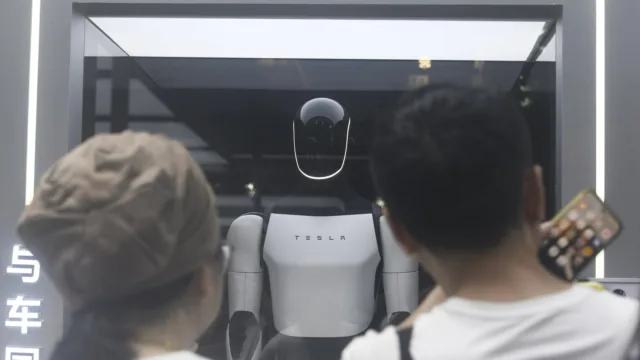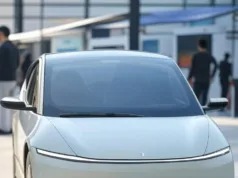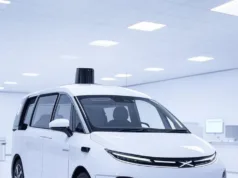
Elon Musk‘s bid to become the world’s first trillionaire increasingly rests on a single proposition: that Tesla can evolve from an electric-vehicle company into a robotics powerhouse. Musk has made the case repeatedly that the company’s future valuation depends not on cars but on full autonomy and an «army» of humanoid robots called Optimus that could one day perform the work of millions. It is a bold vision and a huge bet — one many technologists believe is both technologically plausible and financially transformative.
But let’s take a step back and level-set on one inconvenient truth investors may be underestimating amid all the swagger: Musk’s great vision only scales if China permits it to scale. And as Beijing finalizes the framework of its 15th Five-Year Plan (15FYP), China is signaling that robotics and embodied AI are its future domain — national capabilities that Xi Jinping sees as central to the country’s industrial future. That means Musk isn’t just competing with Silicon Valley. He is competing with the full force of the Chinese state and its determination to make robotics a driving engine of the next stage of national development.
In 2023, China installed over 290,000 industrial robots, more than the rest of the world combined. Robot density reached 470 robots per 10,000 workers, surpassing Japan and Germany for the first time. This was not all organic market behavior. It was the result of targeted state intervention — massive subsidies for robot adoption, low-cost financing, and mandates that provincial governments integrate automation into their industrial restructuring plans.
China’s leadership has now elevated robotics even further. In late October, when the Fourth Plenum released its draft 15FYP guidance, a new phrase dominated the document: «new quality productive forces» (NQPF). It may sound like a rhetorical mouthful to Western ears, but in the Chinese policy system it is a clear signal: the next decade of growth will rely on AI-driven, robot-enabled productivity rather than abundant and cheap labor.
This is designed to be a whole-of-government and society push and the Chinese state is gearing up accordingly. The Ministry of Industry and Information Technology has launched its «Robotics + Applications» initiative to embed robots across logistics, healthcare, warehousing, construction, and energy. Hundreds of robot pilot zones and testing platforms have been established across the country. National standards for humanoid robots — governing everything from motion safety to human-robot interaction — were drafted this year, long before the United States has even begun the process.
And Beijing has started showing off the progress. China’s recent «Robot Games,» a hybrid of competition and industrial showcase, featured bipedal robots walking beams, balancing on narrow ledges, navigating obstacle courses, and assembling components in mock production lines. Videos of these demonstrations — some impressive, some eerily awkward — went viral on Chinese platforms and Western tech feeds alike. They were meant to send a message: China is preparing to industrialize humanoid robots at scale.
Tesla’s Optimus needs what China is building
This brings us back to Musk’s trillionaire ambition. Optimus is a moonshot, but its success will not depend on showy demonstrations and robot dance-offs. It will depend on deployment at scale — robots learning, improving, and demonstrating economic value inside real-world industrial and commercial environments. Humanoid robots evolve through work: walking, grasping, carrying, assembling, coordinating, and networking. They need factories, warehouses, distribution centers, and dense human-machine integrated ecosystems to fully mature. And right now, only China is building this integrated ecosystem at scale.
This is where many investors misjudge the terrain. China does not simply influence Tesla’s robotics future; it likely stands to structure it. Musk can prototype Optimus in California or Texas but manufacturing it affordably and at scale requires China’s industrial ecosystem. No other country offers the same concentration of component suppliers, precision manufacturers, and high-volume assembly capacity. Yet access to that ecosystem is contingent and dependent on goodwill from Beijing and good relations between the U.S. and China. Producing foreign-controlled humanoid robots in China requires political comfort, regulatory approval, and an implicit understanding that China cannot lose the race to a robotics future by enabling a foreign competitor to the detriment of its own companies. Beijing can grant, condition, throttle, or block access depending on how Optimus fits into China’s own strategic calculus and goals.
Even if Tesla builds the robots elsewhere, it will still depend heavily on China. Whether the servomotors that drive a humanoid’s joints, the harmonic reducers that give it fluid movement, the force and torque sensors, the machine-vision modules, the LFP batteries that stabilize its center of gravity, and the aluminum alloys and specialty steels that form its skeleton — China leads in production, cost, and refinement for nearly all of them. Musk can diversify assembly, but he cannot escape dependence on China’s hardware ecosystem without another country spending years and billions to replicate it.
And hardware is only step one. Humanoid robots need deployment, and China offers the world’s richest terrain for training and iteration. Its factories are vast, diverse, and increasingly robot-friendly with no labor unions to protest worker displacement. Its pilot zones and robot-heavy industrial parks are growing. If Optimus cannot operate in China’s industrial landscape, Tesla forfeits the most valuable dataset and learning environment available to any robotics company — one that no Western economy currently matches.
China is also moving to set the rules of the sector. It is drafting national standards for humanoids, defining how they move, connect, exchange data, and interact with humans. Any robot operating in China will be required to comply. And because humanoids collect sensitive spatial and operational data, China’s security and data-governance laws will subject systems like Optimus to strict scrutiny. This is not hypothetical; it is already codified in Chinese law.
China’s 15FYP envisions a world where Chinese-made humanoid robots become central to industrial upgrading, supply chain resilience, and national competitiveness. It imagines a domestic ecosystem — components, manufacturing, deployment, standards — controlled and powered by Chinese firms. In this world, robots are national and strategic assets, not vanity projects.
China’s reality and current trajectory does not cleanly align with Musk’s hope to build a global fleet of Optimus robots — a robot army to be deployed globally, perhaps with a hope of both manufacturing and deploying them inside China. If this is indeed the case, as many suspect it is, at some point, Tesla will face a stark choice: adapt Optimus to China’s regulatory architecture for access, or develop it outside the world’s most important robotics ecosystem. Either path carries real costs for the trillionaire narrative.
Elon Musk may be able to build a robot army. He may be able to design it, prototype it, and even deploy it worldwide. But whether that robot army ever reaches the scale required to justify trillion-dollar valuations and his trillion-dollar payday is no longer a simple technology question. It is a geopolitical one. And the answer, for now, rests in Beijing.
—By Dewardric McNeal, Managing Director and Senior Policy Analyst at Longview Global, and a CNBC Contributor









